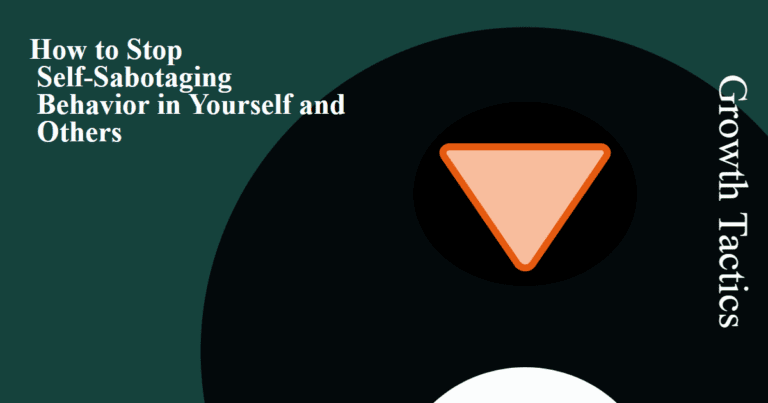Gratitude lists are a simple and effective way to increase your happiness. They’re also easy to do, and you can start right now for free!
Gratitude can make us feel good about ourselves and our lives. The idea behind gratitude lists is that by writing down what we’re grateful for, we’ll feel happier overall. It’s been shown that people who keep gratitude journals tend to be happier than those who don’t. And even just thinking about positive things can boost your mood.
Jump To Section
What is a Gratitude List?
A gratitude list is your secret weapon for a happier life. It’s simple: you write down things you’re thankful for. Big or small, it doesn’t matter. Maybe it’s your morning coffee or a friend’s smile. Remember, gratitude isn’t one-size-fits-all. Make it work for you. Your list, your rules.
Why should I start one?
By taking a few moments each day to write down things that make you feel grateful, you’re actively practicing gratitude and training your brain to focus on the positive aspects of your life. This can have a profound impact on your overall well-being and happiness.
Additionally, by writing down your accomplishments and successes, you’re reminding yourself of your own capabilities and strengths, which can increase your confidence and ultimately help you achieve your goals. So if you’re looking for a simple yet effective way to improve your mood and mindset, starting a gratitude list is definitely worth a try!
The Benefits of Keeping a Gratitude Journal
There are many benefits of creating a gratitude list. If you are debating whether you should create one, here are a few benefits to consider:
Increased happiness: Researchers have found that gratitude is associated with increased positive emotions and decreased negative emotions. This means that when you’re grateful, you’re likely to feel more happy and joyful than if you weren’t grateful at all!
Improved mental health: Gratitude helps people cope with stressors in their lives by increasing their sense of meaning and purpose. In addition, gratitude can help reduce anxiety by increasing optimism about the future.
Better relationships: People who practice gratitude tend to be more generous toward others–and generosity makes people feel closer! It also protects against conflict within relationships because it makes us want to cooperate instead of compete with each other.
Increased resilience: When we practice gratitude regularly, we build up our resilience and ability to cope with difficult situations. This is because gratitude helps us focus on the positive aspects of our lives, even during challenging times.
Increased empathy: Gratitude can also increase our empathy for others, helping us to better understand and connect with those around us. This can lead to stronger relationships and a greater sense of community.
Overall, creating a gratitude list is a simple yet powerful way to improve our lives in many different ways. By focusing on the positive aspects of our lives, we can increase our happiness, improve our mental and physical health, and strengthen our relationships with others. So why not give it a try and see how it can benefit you?
How to Make a Gratitude List
Here is a step-by-step guide on how to create your own gratitude list:
- Set aside time: Choose a time of day when you can sit down and focus on your list without any distractions. This could be first thing in the morning, before going to bed, or during a break in your day.
- Grab a pen and paper: Take out a pen and a notebook or a piece of paper. You can also use a note-taking app on your phone or computer if you prefer.
- Reflect on your day: Think about the things that you are grateful for from your day. You can start with simple things like having a roof over your head, food to eat, or a job to go to. Then, move on to more specific things, like a kind word from a friend or a beautiful sunset.
- Write it down: Write down everything that comes to mind. Don’t worry about grammar or spelling, just get your thoughts down on paper. If you’re using an app, type it out as quickly as you can.
- Be specific: Try to be as specific as possible about what you’re grateful for. Instead of just writing “my family,” write down “my sister for always being there for me” or “my mom for cooking me my favorite meal.”
- Focus on the positive: Keep your focus on the positive things in your life. Avoid writing down things that you don’t have, or things that you wish you had. This exercise is all about recognizing what you do have and being grateful for it.
- Read it out loud: Once you’ve finished your list, read it out loud to yourself. This can help reinforce the positive feelings associated with gratitude.
- Add to it every day: Make creating a gratitude list a daily habit. Set a goal to write down at least 3 things you’re grateful for each day. This will help you build a habit of gratitude and reinforce positive feelings in your life.
By taking a few minutes each day to reflect on the things you’re grateful for, you can cultivate a positive mindset and improve your overall well-being.
Tips for Writing a Gratitude List
Focus on the present.
To overcome the tendency to focus on the future when creating a gratitude list, remind yourself to focus on the present moment. Take a few deep breaths and look around you. Notice the things that you are grateful for at this moment, such as a comfortable chair, a warm cup of tea, or a peaceful environment. By focusing on these present blessings, you can shift your mindset to a more positive and content state, improving your overall well-being. Remember, the key is to stay present and avoid getting distracted by thoughts of the future.
Start with the basics.
When it comes to practicing gratitude, it’s essential to start with the basics. Basic things such as having a roof over your head, food to eat, and good health are often taken for granted, but they are the foundation of our lives. Recognizing and appreciating these basic necessities helps to cultivate a positive mindset and a greater appreciation for life.
Be specific.
Being specific in your gratitude list helps you appreciate and acknowledge the details that often go unnoticed, bringing more joy and positivity into your life. For instance, instead of just being grateful for your job, list out the specific aspects of it that you appreciate, like having supportive colleagues or a flexible schedule. This way, you’ll feel more connected to the things you’re grateful for and experience a deeper sense of appreciation.
Use descriptive language
By using descriptive language, you can enhance your feelings of gratitude and make them more vivid and tangible. For instance, instead of just being thankful for a beautiful sunset, describe the colors and patterns of the sky, the warmth of the sun on your skin, and the peaceful feeling it brings. This way, you’ll feel more connected to the experience and your gratitude will be more profound. Using descriptive language in your gratitude list helps you to fully appreciate and savor the things you’re grateful for, leading to a more positive and fulfilled life.
Include people in your gratitude journal
To include people in your gratitude list, think about the individuals in your life who have made a positive impact on you. This could be a friend who always listens when you need to talk, a family member who supports you unconditionally, or a coworker who makes your workday more enjoyable.
By expressing gratitude for these people, you not only reinforce the positive aspects of your relationships but also strengthen the connections you have with them. This can lead to increased feelings of happiness and contentment, as well as a sense of belonging and community. So take a moment to think about the people in your life who deserve your gratitude, and make sure to let them know how much you appreciate them.
Make it a daily habit
Making something a daily habit can be challenging, but with dedication and practice, it can become a natural part of your routine. When it comes to creating a gratitude list, the benefits of making it a daily habit are numerous.
By setting aside just a few minutes each day to reflect on what you’re thankful for, you can experience the transformative power of gratitude in your life. So, take the first step today and commit to making creating a gratitude list a daily habit. You’ll be amazed at how much it can improve your overall well-being.
Gratitude List Examples (Things to Be Grateful For)
Here are some examples of gratitude list items that you can include in your daily practice:
- A supportive partner who always has your back
- A cozy home to come back to at the end of the day
- The ability to pursue your passions and interests
- A job that provides financial stability and personal fulfillment
- Good health and access to healthcare resources
- A delicious meal shared with loved ones
- The beauty of nature and the changing seasons
- A fulfilling book or movie that inspires you
- The kindness of a stranger or friend
- The opportunity to learn and grow each day
- The love and companionship of a pet
- The support and guidance of a mentor or role model
- The opportunity to travel and explore new places
- The comfort of a warm blanket on a cold day
- The joy of a favorite hobby or pastime
- The beauty of a sunrise or sunset
- The laughter and humor shared with friends and family
- The presence of positive and supportive people in your life
- The ability to give back to your community and make a difference
- The simple pleasures of life, such as a warm cup of tea or a good night’s sleep
- The wisdom and guidance of a parent or grandparent
- The inspiration and creativity of art or music
- The beauty and diversity of different cultures and traditions
- The healing power of nature and fresh air
- The joy and excitement of a new experience or challenge
- The comfort and support of a close-knit community
- The opportunity to make new friends and connections
- The peace and serenity of a quiet moment alone
- The delicious flavors and aromas of a home-cooked meal
- The beauty and wonder of the world around us
Remember, your gratitude list can include anything that brings you joy and appreciation. The key is to focus on what you have, rather than what you lack, and to cultivate a sense of gratitude for the abundance in your life. By making this a daily practice, you’ll start noticing the positive impact it has on your overall well-being.
Conclusion
Gratitude is a powerful force. It can change your life and the lives of others around you.
Gratitude is a habit that can be practiced anywhere, at any time. You don’t need to buy anything new or make any major changes in your life. All it takes is making gratitude lists every day, no matter how busy or stressed out you are!
The more often we practice this simple act of gratitude, the more we will feel its benefits. Not only in our own lives but also through our relationships with others.
Did you enjoy this article on the power of a gratitude list? Please share and subscribe below.








